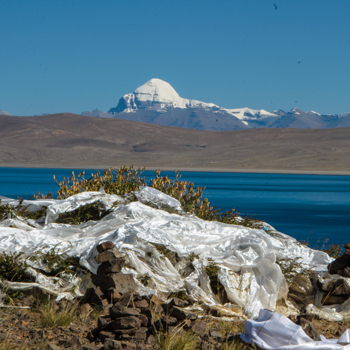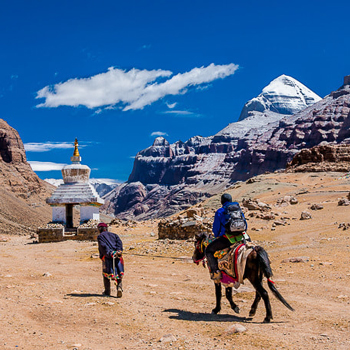Mount Kailash is a holy mountain in the far west of Tibet, situated in the Gangdise Himalaya range. It has long been a site of spiritual significance for Buddhists, Hindus, Jains, and Bonpos and is the centerpiece of a complex of pilgrimage sites. Its summit is believed to be the mythical abode of the Hindu deity Shiva, the Destroyer.
Mount Kailash is a stunningly beautiful peak located on the Tibetan Plateau, rising to 6,638 m above sea level. It is believed that walking around the base of the mountain can be spiritually transformative, and the inner kora, or circuit, is one of the most sought-after pilgrimages in the world.
The mountain is revered as a powerful symbol of inner peace and harmony and has been praised in numerous texts from East Asia. This blog post explores Mount Kailash’s spiritual significance and how it has been revered for centuries.
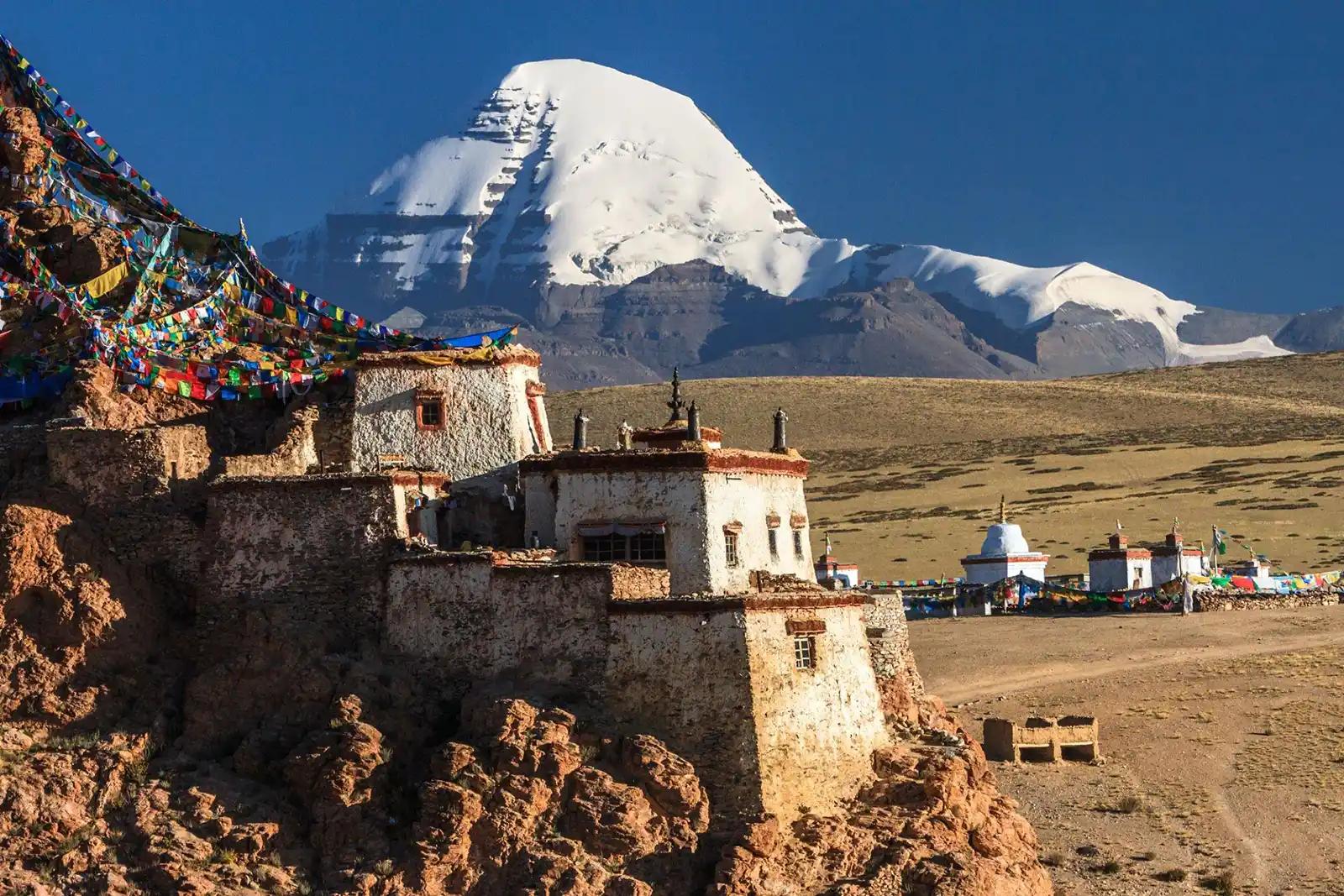
Mount Kailash is not a Mountain but a Pyramid.
Astronomers have been astounded by Mount Kailash’s monumental structure. Its apex is precisely aligned with the four cardinal points, leading many to posit that it is not a mountain but an enormous pyramid. Furthermore, the surrounding mountains are believed to be miniature pyramids, thus forming a whole system much larger than the Egyptian, Chinese, and Yonaguni pyramids. Truly, Mount Kailash is a behemoth of a structure.
Myths and Tales of Sacred Mt. Kailash Across Faiths and Cultures
Adherents revere sacred Mount Kailash to four major religions – Bon, Buddhism, Hinduism, and Jainism. It is said that people have been drawn to its majestic heights since time immemorial, even before the emergence of modern religious traditions. In mythology, Kailash is considered the cosmic axis, the birthplace, and the center of all creation. Ancient Hindu epics such as the Ramayana and Mahabharata attest to its mystical origins, and it is possible that a previous, long-forgotten culture acknowledged its spiritual significance.
According to Hinduism, Lord Shiva resides in his heavenly abode. Legend holds that the immortal God spends his days practicing yoga and meditation with his divine family of Goddess Parvati, Lord Kumar, and Lord Ganesh. Jains call this Mount Ashtapada, where Rishabhadeva, the first of the twenty-four Tirthankars, achieved enlightenment. Followers of Bon, the Buddhist and shamanistic religion of Tibet, refer to the mountain as Tiese, home to the heavenly goddess Sipaimen. Tibetan Buddhists revere this summit as the dwelling of Demchog and his wife, Dorje Phagmo.
Swastika and other phenomena on Mount Kailash
The majestic mountain of Kailash stands proud and tall, with each of its slopes referred to as its faces. The southern side stands out with a distinct, deep crevice slicing through it, forming a grand staircase of terraces along the cracked walls. As the sun sets, it paints an ethereal image of the ancient symbol of spiritual power – the swastika – across the surface, visible for miles in every direction.
The magnificence of the Kailash ranges, the four great rivers of Asia, and their source ice caps create a stunning swastika atop the mountain. From the north, the Indus; from the south, the Karnapi (a tributary of the Ganges); from the west, the Sutlej; from the east, the Brahmaputra- these rivers bring life to nearly half of the Asian continent.
Scientific research has concluded that Mount Kailash is the world’s largest energy hub! It is said that whoever goes to conquer Kailash will grow old quickly due to its mysterious power. Human biological activity in this place is believed to proceed faster than usual, leading to accelerated aging. This phenomenon has been attributed to the powerful energy emanating from Kailash and its surrounding environment.
Two Contrasting Lakes Side-By-Side
Nestled close to the majestic Mount Kailash, two spectacular lakes offer a stark contrast: Manasarovar (4590 m) and Rakshas Tal (4575 m). Though separated by a mere isthmus, the difference between them is pronounced – Manasarovar provides heavenly refreshment, granting spiritual cleansing to those brave enough to take a dip while entering the waters of Rakshas Tal is forbidden to monks as it is said to be cursed. The former is a tranquil freshwater lake, while the latter is a salty, fierce one.
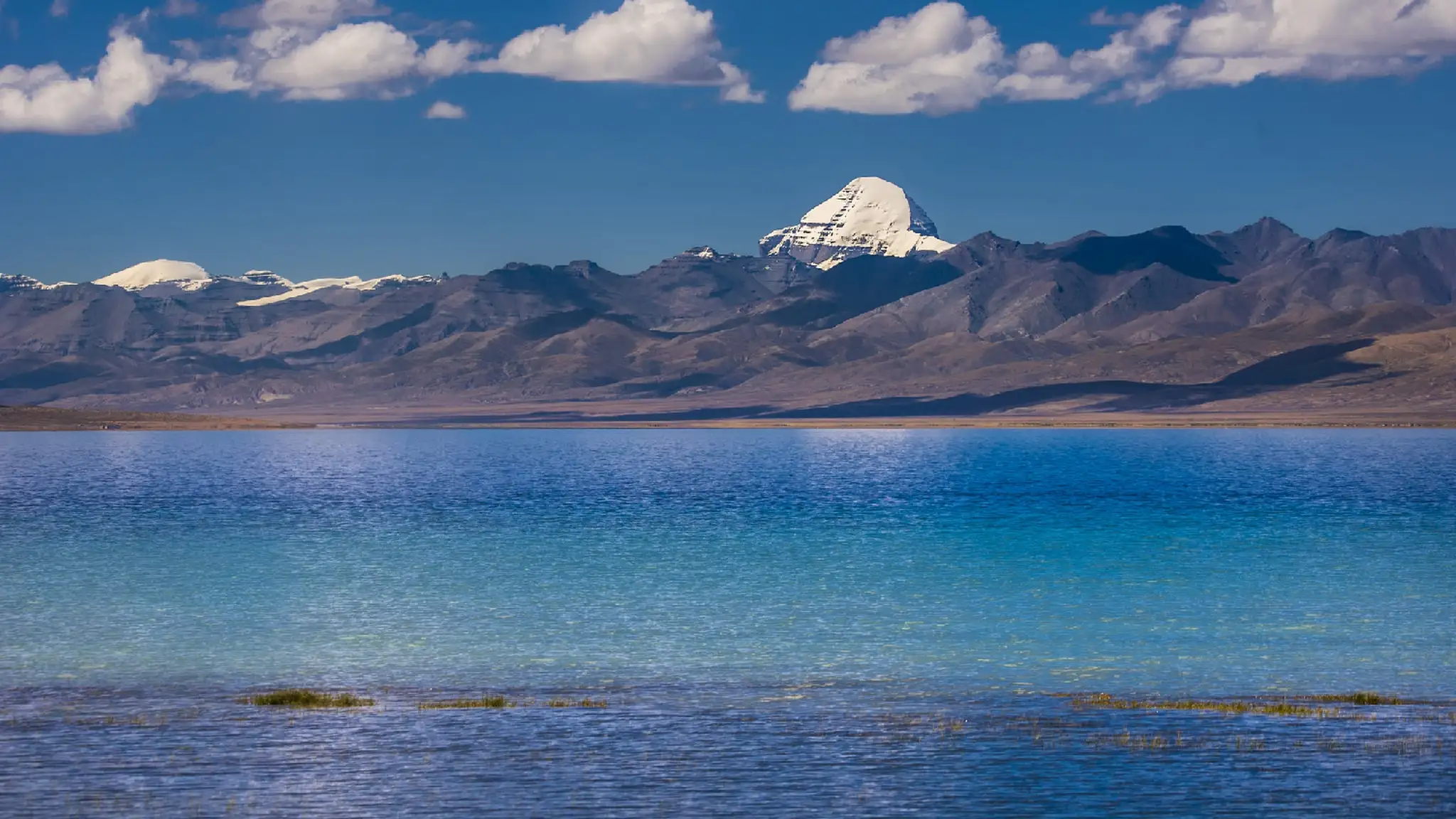
The Secret of Mount Kailash’ 6666
A mysterious and fascinating geographical phenomenon connected to Mount Kailash has to be seen to be believed! Suppose you draw a meridian from the mountain’s peak to the legendary pyramids of Egypt. The same line will continue to the enigmatic Easter Island, home to the ancient Inca pyramids. But that’s not where the intrigue ends. In a truly incredible feat of nature, the distance from Mount Kailash to Stonehenge is 6666 kilometers. From Mount Kailash to the extreme point of the North Pole hemisphere, the distance is 6666 kilometers. To the South Pole, it’s twice that – no more, no less than precisely two times 6666 km!
The climate on Mount Kailash
Mount Kailash experiences a cold, dry climate typical of Tibet. The most pleasant season is summer, stretching from May to August. Other times of the year can be much harsher than this period. The climate in the region is generally mild, with temperatures usually averaging 15°C throughout the year. Monsoon rains usually start in September and last until November.
Winter is usually observed to start in December and end in April. During this period, there generally is an overall decline in temperature to 10°C along with precipitation. Days become relatively cold on average, dropping as low as 5°C. Mount Kailash and Lake Manasarovar are often blanketed in snow regardless of the season, but during storms, the temperature can drop as low as -15°C and be accompanied by heavy snowfall.
Flora and Fauna on Mount Kailash
Nature enthusiasts will find much to appreciate at this incredible peak. Here, you can observe various exotic birds, wild plants, and animals in their natural habitat. The mountain’s slopes are dotted with various forget-me-nots that provide sustenance for yaks, the critical mode of transport in these parts.
Additionally, the slopes are blanketed with Saussurea, more commonly called Brahma Kamal. The grass near mountain streams is lush, and wild alliums add a lilac when in bloom, making the hillsides look stunning. This holy mountain also serves as a refuge for various species, such as wild donkeys, Tibetan antelopes, yaks, swans, and black-necked cranes.
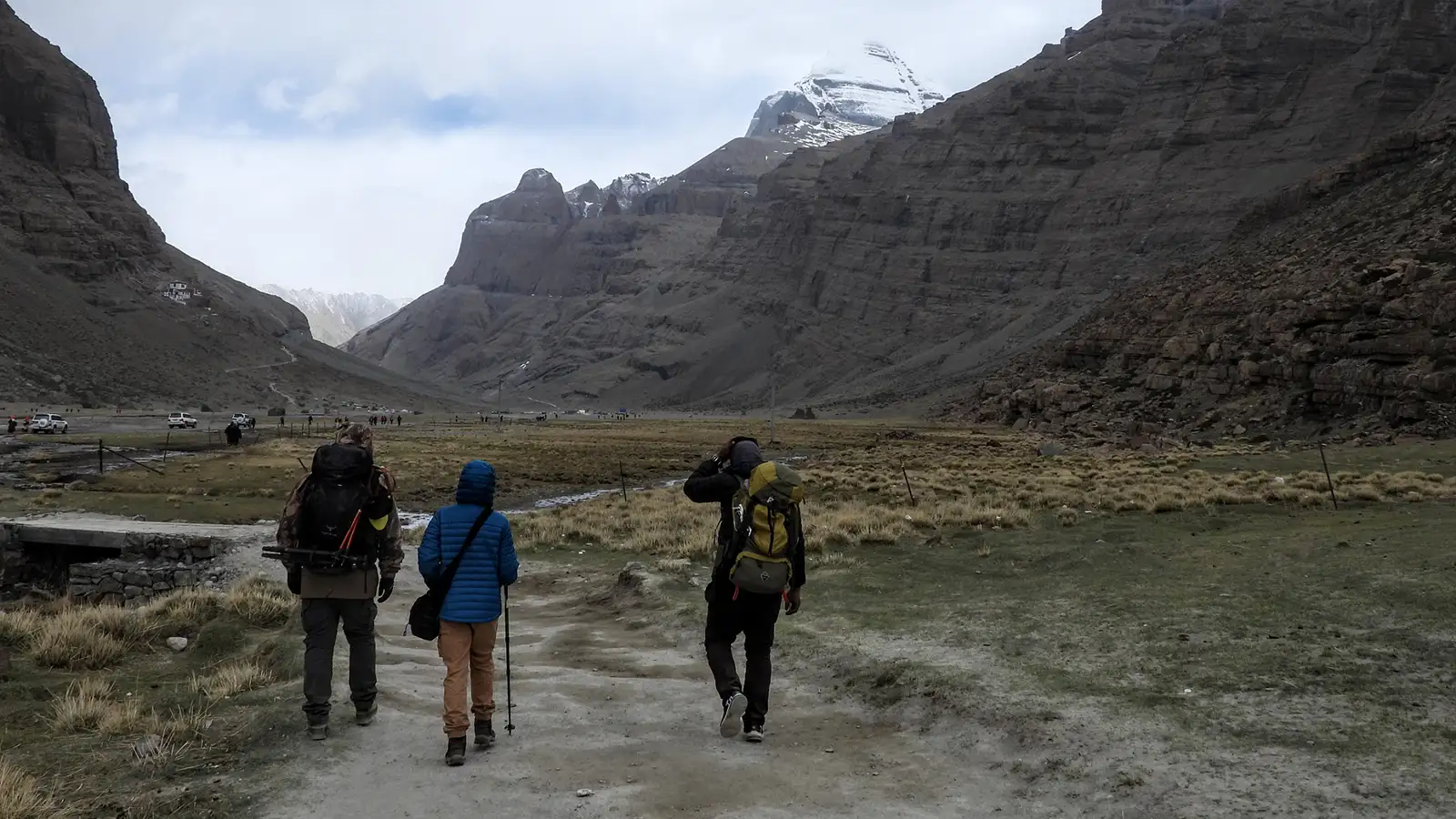
Tourism Infrastructure
With the route’s tea houses, hotels, and cafes, the hike to Mount Kailash doesn’t require too much gear. It is wise to bring a 50-80 liter backpack to ensure you have a warm sleeping bag, nutritious snacks, toiletries, and a couple of extra sets of clothing like socks and underwear!
If you’re looking for a way to make your journey through Darchen village more enjoyable, consider hiring a porter or some pack animals. You can find a local guide or a representative office of a travel company online with whom you can plan every detail. Plus, you can even take part in the journey on horseback! Just remember: the Dolma La pass is a steep 3 km long, and riding a horse here is not advisable due to the risk of injury. During peak Hindu pilgrimage season (June to September), horses and hotel rooms may be hard to come by, so plan and book ahead!
Best season
Mid-May to June and September to mid-October are the ideal times of the year to journey to Mount Kailash. Although the region has a rainy season during July and August, it is usually mild and does not affect your experience. As temperatures rise from June, incredible peak views come into view. By the end of September, temperatures start to cool down, and the rainy season draws close.
If you’re planning a getaway in June or September, it’s best to make your reservations at least one month in advance; large groups of Indian pilgrims often book entire hotels during this time. From April to October, don’t forget to pack some warm clothes for your hike – snow is likely, and the weather can change suddenly, mainly if your trek takes you through the challengingly high Dolma-La pass (at an altitude of 5,630 meters). And if your vacation falls between the third week of October and the beginning of April, the weather can be unpredictable. You would have to pack for all eventualities.
In the End
Mount Kailash holds a special place in the hearts of many. It is a place of spiritual and religious significance for four major religions, and it is a natural wonder and beauty. Its spiritual solid power can be felt by anyone who makes the journey to its peak, making it a destination that should be on the bucket list of any intrepid traveler.
[contact-form-7 id=”bec8616″ title=”Inquiry From – Blog”]

